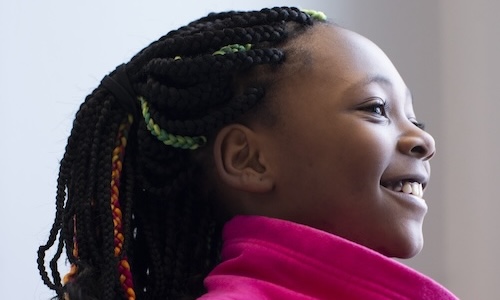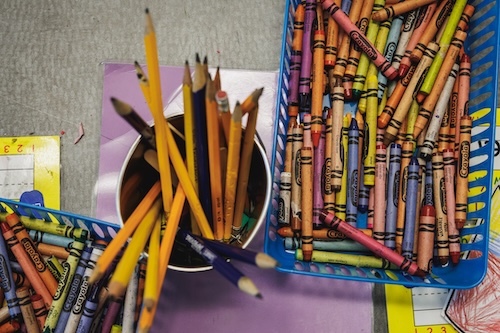
New research sheds light on the impact of the pandemic on early learners and finds, like with older students, achievement levels are down significantly compared to prepandemic levels.
We’ve seen a lot of data examining the impact of the pandemic on learning in grades 3–8. The latest research offers a look at the academic impact of COVID-19 on children who were in kindergarten or who had not yet started school when the pandemic massively disrupted schools and society in March 2020.
It’s critical to look at young learners, as their success in the early years has a direct impact on their ability to thrive as they move up the grades.
What the research shows
NWEA researchers looked at MAP® Growth™ test score data from 1.6 million students in first and second grade in the 2021–22 school year in schools around the country. The researchers then compared their scores to the performance of students in those grades in school year 2018–19.
Scores were down in both reading and math for first- and second-graders compared to the students in those grades before the pandemic for all groups of students. However, consistent with findings for older students, the magnitude of the declines varied for different groups of children, widening prepandemic opportunity gaps.
The achievement decline ranged in magnitude from six to seven percentile point declines in reading and three to eight percentile point declines in math. Specifically, Black, Hispanic, and American Indian and Alaska Native (AIAN) students lost more ground than white and Asian students, patterns we’ve also seen with older students. The same disparities were seen in high-poverty schools, as compared to low-poverty schools.
The research shows second graders did make gains that were consistent with prepandemic growth trends in both subjects in 2021–22, a trend also seen with older elementary students. So while those students, who are today’s third-graders, are still behind where they would have been had the pandemic not occurred, it’s a positive sign that they are growing at expected rates again.
The situation is more concerning for first-graders, who aren’t rebounding as quickly as children a year older than them. First graders in 2021–22, today’s second graders, grew less in math and reading than is typical for an average year, meaning they fell further behind relative to achievement levels seen before the pandemic.
While we’ve known the pandemic had a negative impact on students who experienced massive changes in instruction—most notably having to go from in-person to remote learning—this latest research shows children who have only ever known schooling during the pandemic era also suffered academically.
What now?
The results highlight the need for targeted investments in early literacy and math programs to ensure that our youngest students can develop the knowledge and skills they need to successfully progress through school.
To improve early literacy, we need policies that support schools in adopting practices and resources aligned to the science of reading, with an explicit emphasis on phonics and the connection between letters and sounds, vocabulary acquisition, comprehension, and fluency skills. Teacher-preparation programs also need to focus on early literacy and evidence-based practices.
Research has shown that using tools and strategies that assess students to identify opportunity gaps—and then providing targeted interventions to address those gaps and personalize learning—helps students catch up in math.
Lessons from the field
Educators, school and system leaders, and policymakers can take steps now to support students, including early learners. Policymakers can use federal, state, and local funding to support our youngest students in a variety of ways. For example, high-quality summer programs that help prepare children for kindergarten can be part of the solution, as can expanding access to high-quality early learning programs.
Some specific ways states and districts have been leveraging resources to improve early learning include creating new preschool programs or classrooms, investing in high-quality professional learning opportunities for early childcare providers, and opening parent-child centers that support the well-being and success of preschoolers and their families.
Some recent efforts around the country to increase access to early education programs include an initiative in Washington, DC, to expand existing high-quality offerings, as well as in Mississippi, where the state has expanded high-quality early learning programs for preschoolers as part of a broader goal of getting all students to be proficient readers by third grade.
We can learn a lot from Mississippi, where state leaders have also invested in literacy coaches to support classroom teachers in using evidence-based practices aligned to the science of reading to teach children to read. In addition, Mississippi leaders have invested in other strong professional development programs for teachers, new monitoring and assessment tools to assess student learning in early elementary grades, and family resources and engagement activities. All of this has been paying off in recent years with improvements in reading scores.
Early learning data
It’s critical that educators and leaders use data to drive decision-making in schools. While that is generally understood for students in third grade and up, partly due to state and federal accountability rules, it’s also vital that we use data to guide instruction for younger students.
To do this, schools need to adopt and use assessment tools that help educators monitor student progress among younger learners, identify areas of need, and serve as a check on instructional approaches. It’s helpful for leaders to support the use of statewide or state-approved assessments for students in the early grades and then use assessment data to inform research and support policymaking.
Louisiana can serve as a model in this area. It created a data system that connects statewide information from early childhood through high school and even into postsecondary life, a task all states should consider.
Share your thoughts
It should come as no surprise that the massive disruption to schooling during the pandemic impacted not just older students but younger ones, too—those who perhaps had to learn to read and develop critical numeracy skills during remote instruction. The latest research gives us a clear picture of the problem. Finding the solutions is the hard work before us now.
If you’re involved in early education and have ideas for closing pandemic-related opportunity gaps, we’d love to hear from you. Please reach out on Twitter @NWEAPolicy.
This blog post was coauthored by Karyn Lewis, director of the Center for School and Student Progress at NWEA.







